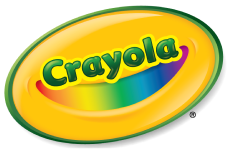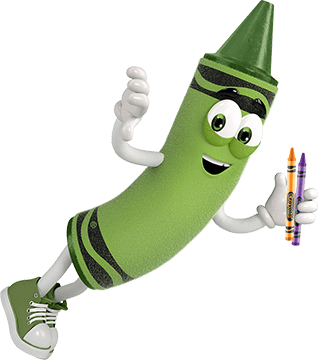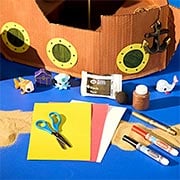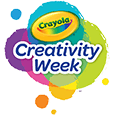Silly Putty® fue descubierta en 1943 por James Wright, quien mezcló ácido bórico y aceite de silicona. Fue presentado al público en 1950 por Peter Hodgson. Crayola® adquirió los derechos exclusivos de fabricación de Silly Putty en 1977. Aunque las fórmulas exactas que usa Crayola para hacer Silly Putty son patentadas, podemos compartir que está hecha principalmente de silicona y pigmentos de color.
¡Haga clic en este video de Travel Channel para obtener más información sobre el nacimiento de Silly Putty! Este video funciona mejor en Google Chrome, Mozilla Firefox y Microsoft Edge.
Si tienes preguntas adicionales, ¡nos encantaría saber de ti! No dudes en llamarnos o enviarnos un mensaje de texto al 1-800-CRAYOLA días laborables entre las 9 AM y las 4 PM hora del Este. Si prefieres enviarnos un correo electrónico, visita nuestra página de contacto.
Preguntas relacionadas
Explora respuestas a preguntas comunes, consejos útiles para eliminar manchas e ideas creativas para aprovechar al máximo nuestros materiales de arte y recursos gratuitos.
-
Technology has changed over the years, eliminating the transfer of messy newspaper comic ink to skin. Since nontransferable ink is now used, newspaper comic print will generally not transfer onto Silly Putty® as it did in the past. Silly Putty can, however, easily lift pencil marks from paper.
-
To remove SILLY PUTTY from hair, you may wish to try using baby oil or a generous amount of hair conditioner along with warm water. Massage the product you choose around the scalp and area containing the Silly Putty and then gently comb it through.
After Silly Putty is removed, wash hair with shampoo.
Please bear in mind, all the stain removal suggestions we offer have been tested in our laboratory, but we are unable to guarantee the results. We recommend you first test our suggestion on a small, inconspicuous area.
If you have additional questions, we would love to hear from you! Feel free to call or text us at 1-800-272-9652 weekdays between 9 AM and 4 PM Eastern Time. If you would prefer to send us an email, visit our contact us page.
-
Silly Putty® is made primarily from silicone and color pigments. Silicone is an oil-based product and by nature will not dry out. If Silly Putty is left out of the container over a period of several years, it may harden due to other ingredients contained in the putty. The other ingredients are proprietary and cannot be shared.
-
Crayola® did not invent the crayon. The "modern" crayon originated in Europe, initially made from a mixture of charcoal and oil, later replaced by powdered pigments. Wax was later substituted for oil, making the sticks sturdier and easier to handle.
In 1902, Crayola Crayons were invented by Binney & Smith and first offered for sale in 1903. The trade name "Crayola" was coined by Mrs. Edwin Binney, combining "craie" (French for chalk stick) and "oleaginous" (oily).
Crayola manufactures over 3 billion crayons each year, primarily made from paraffin wax and color pigment. Learn more about Crayola's colorful history at Crayola.com.
-
Silly Putty is not intended for use as ear plugs. Known as a "solid liquid", it will not maintain a molded shape. It is composed of a silicone material that becomes softer when exposed to normal body temperature. In addition, changes in atmospheric pressure could force the material to flow deeper into the ear than intended, possibly making contact with the eardrum.




